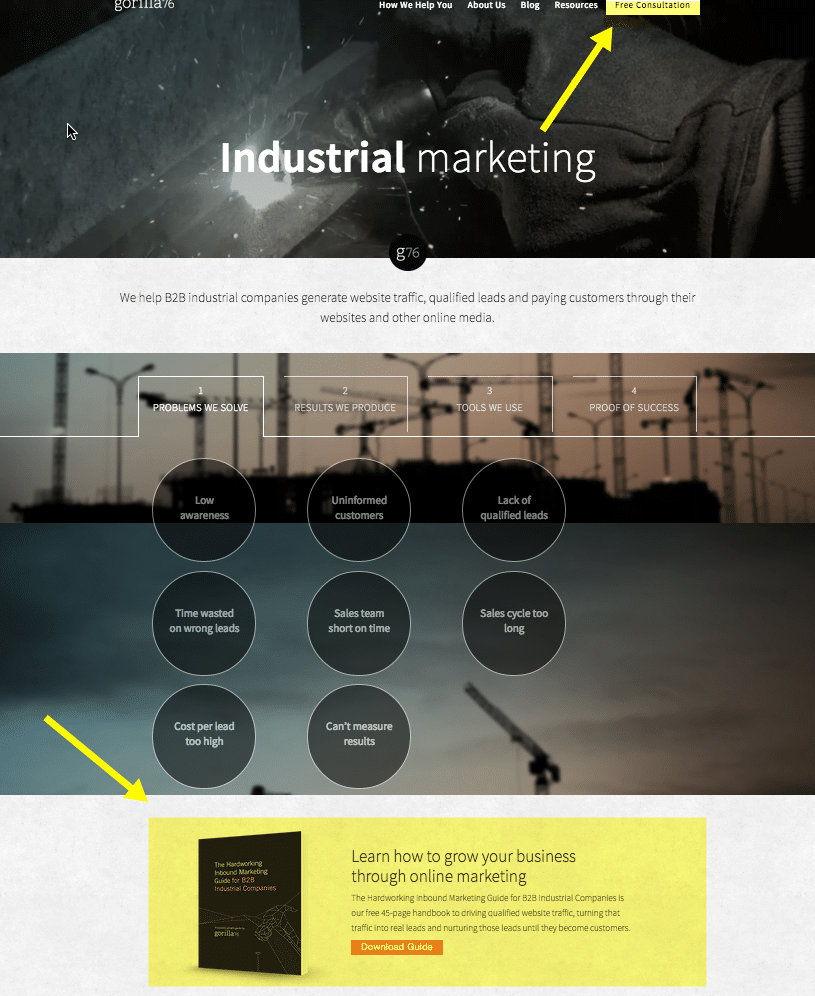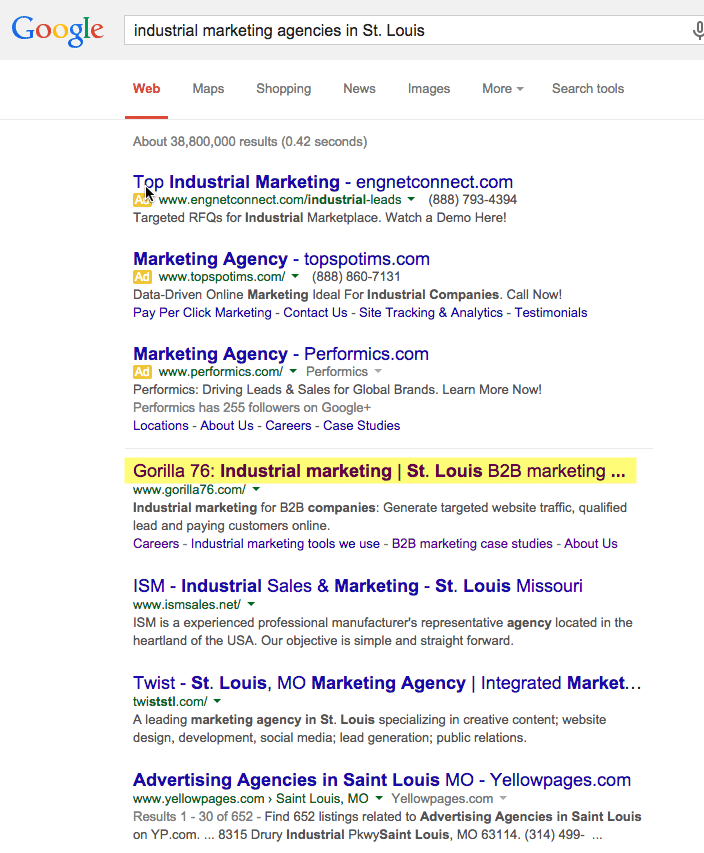You’ve got a B2B website. You had it built a few years back by someone’s cousin’s uncle’s sister’s brother’s roommate. It communicates what you do with a nice “services” section. It educates visitors on your company’s history with a well thought out and heavily revised “about us” page. It boasts the awards with which you’ve decorated the company’s shelves (or storage room). It even prompts visitors, via a “contact us” form, to send you all their precious information when they want to spend their hard-earned money.
This sound like your site? If so, I have some bad news. It’s likely broken. At least if you’re hoping to generate sales qualified leads it is. At Gorilla 76, we believe a company website is the single greatest marketing tool a company can have. No question about it.
In this blog post, I’m going to highlight two very simple (relatively speaking) things you can do to your homepage that can result in an increase in traffic and ultimately an increase in leads.
1. Pay attention to the title tag on your home page
Most people don’t know what a title tag is. And that’s okay. To be honest, until I started working in web marketing, I certainly didn’t know what a title tag was.
Defined, a title tag is nothing more than the title of a page on a website. It appears at the top of the browser window and it’s also the title of a search snippet when you conduct a search in Google.
Title tags are important for two reasons.
First of all, they tell a search user what a given page is about. So, if I search “industrial marketing agencies in St. Louis”, I’m given the following. Note the highlighted portion.
Second, they tell a search engine what a page is about. So it’s important to write your title tags so that they include a targeted keyword for a page (we recommend focusing on one to two keywords per page) as well as clearly communicate to a user what a page is about.
If you look at your site, and all you see is the name of your company at the very top of your browser window, there is work to be done. Instead, you should be seeing something like the following:
2. Give an offer
We’ve already discussed the fact that your site is acting as a brochure. Services, “About Us”, awards, etc. etc. But that’s no good, because the web allows for massive amounts of interaction. So give an offer or two on your homepage. For instance, maybe you know that if you can get a lead on the phone for 15 minutes, you increase your chances of converting that lead into a customer by 50%. But you also know that inbound leads (people coming to you) are much better than cold leads. So give inbound leads an opportunity to come in the door.
Feature a prompt on your home page that invites a user to sign up for a free consultation. Or a free second-opinion service. Obviously, these are just two examples, as I don’t know enough about your business to accurately advise what offers are best. (But of course, if you’d like to hear my opinions live and in color, well, we just happen to offer a free consultation!)
Or maybe your company is the absolute best when it comes to a certain industry practice and you could talk about it until you’re blue in the face. Well, why not write a guide about said practice, that is free to download (for an exchange of an email address of course) and put a big shiny call-to-action button on your home page that advertises it? This stuff works. I promise. It’s the methodology we use and we’ve seen results aplenty.

Whatever you do, make sure it aligns with your marketing goals
As I mentioned, these are just two quick examples. There are lots of things that can be done to a B2B website’s homepage. But these are both pretty simple and align with two very common goals: driving more qualified traffic and doing a better job converting that traffic once it’s on your site. If you align your activities with your goals, you will see success.

